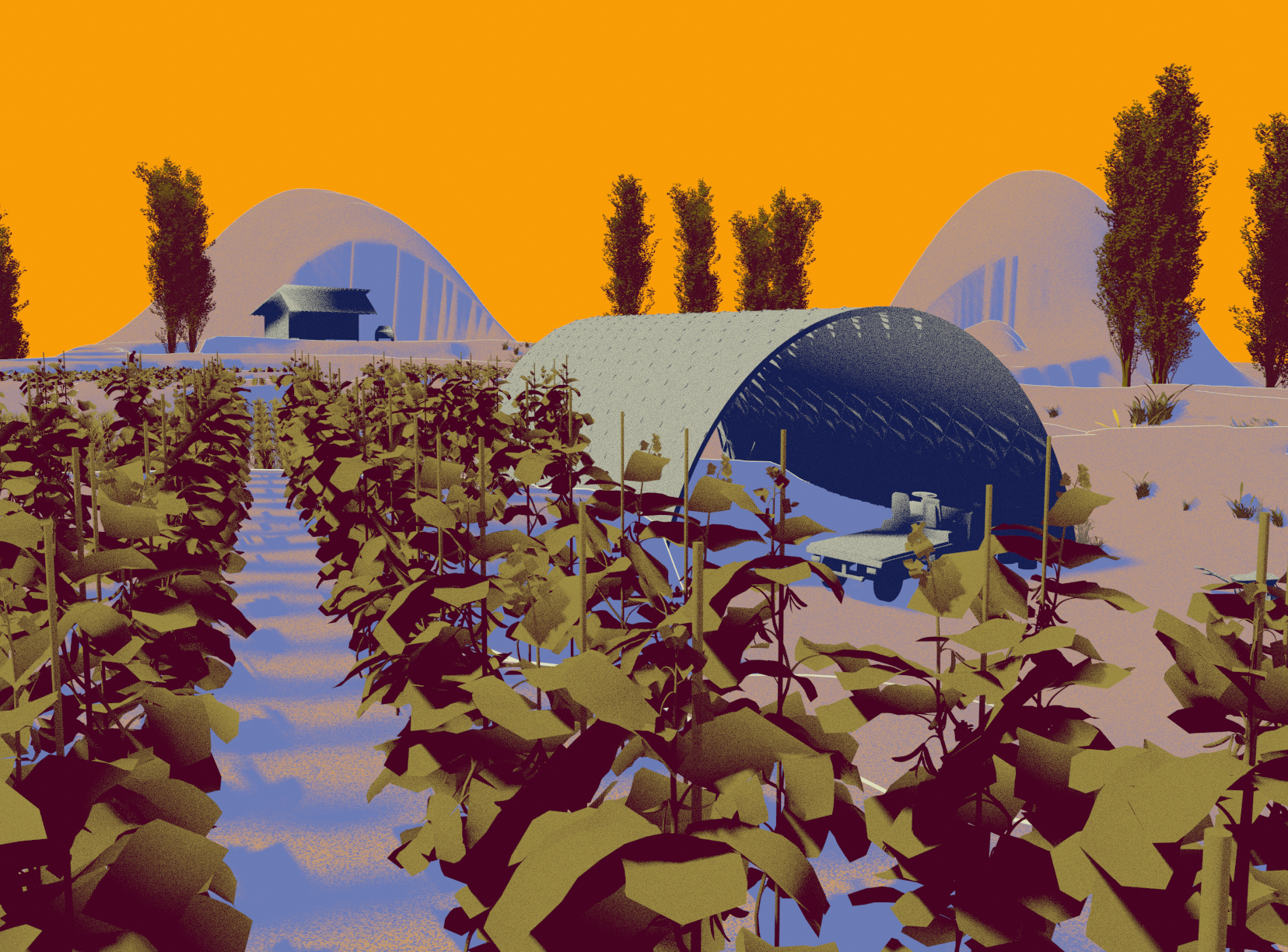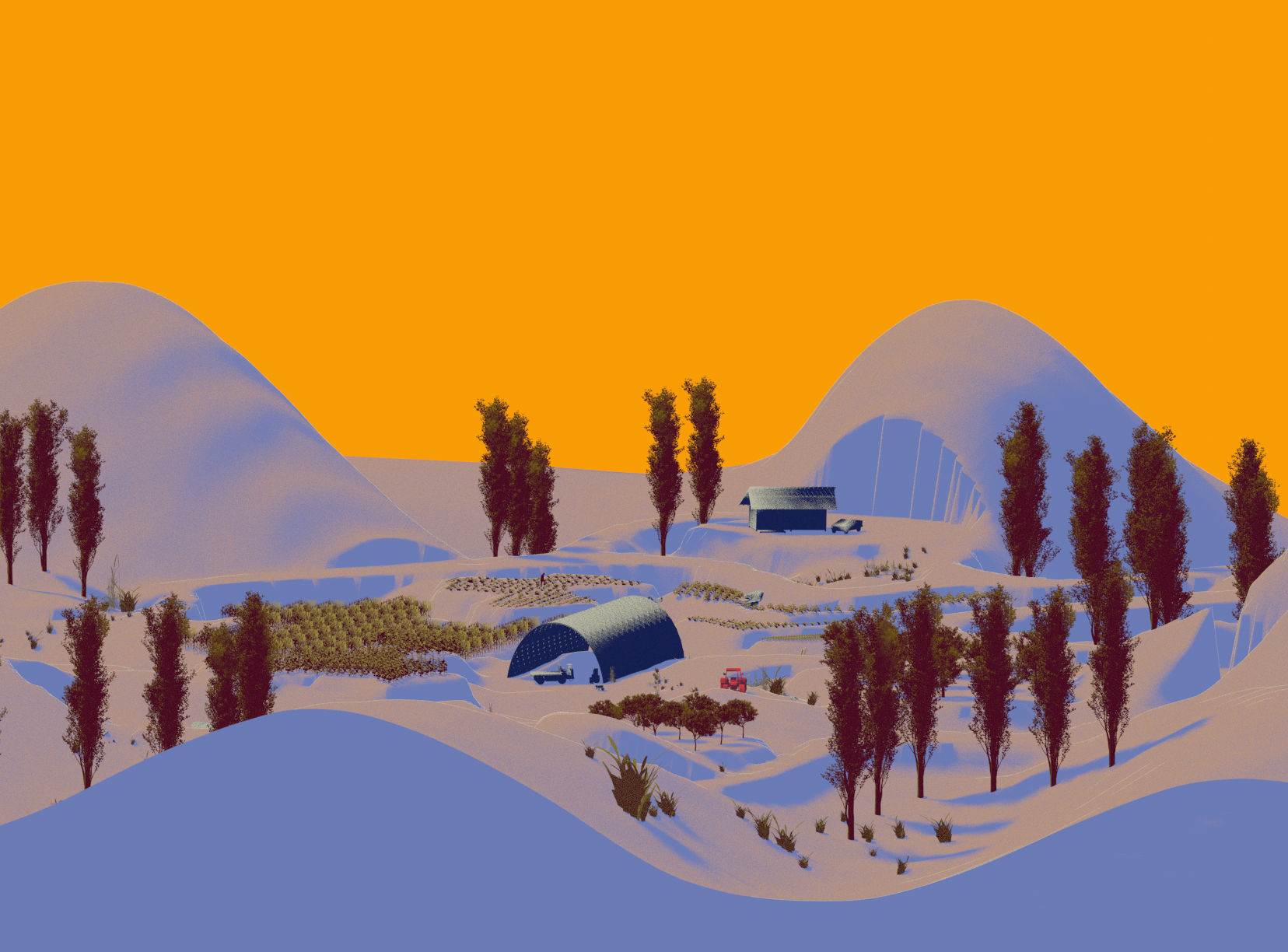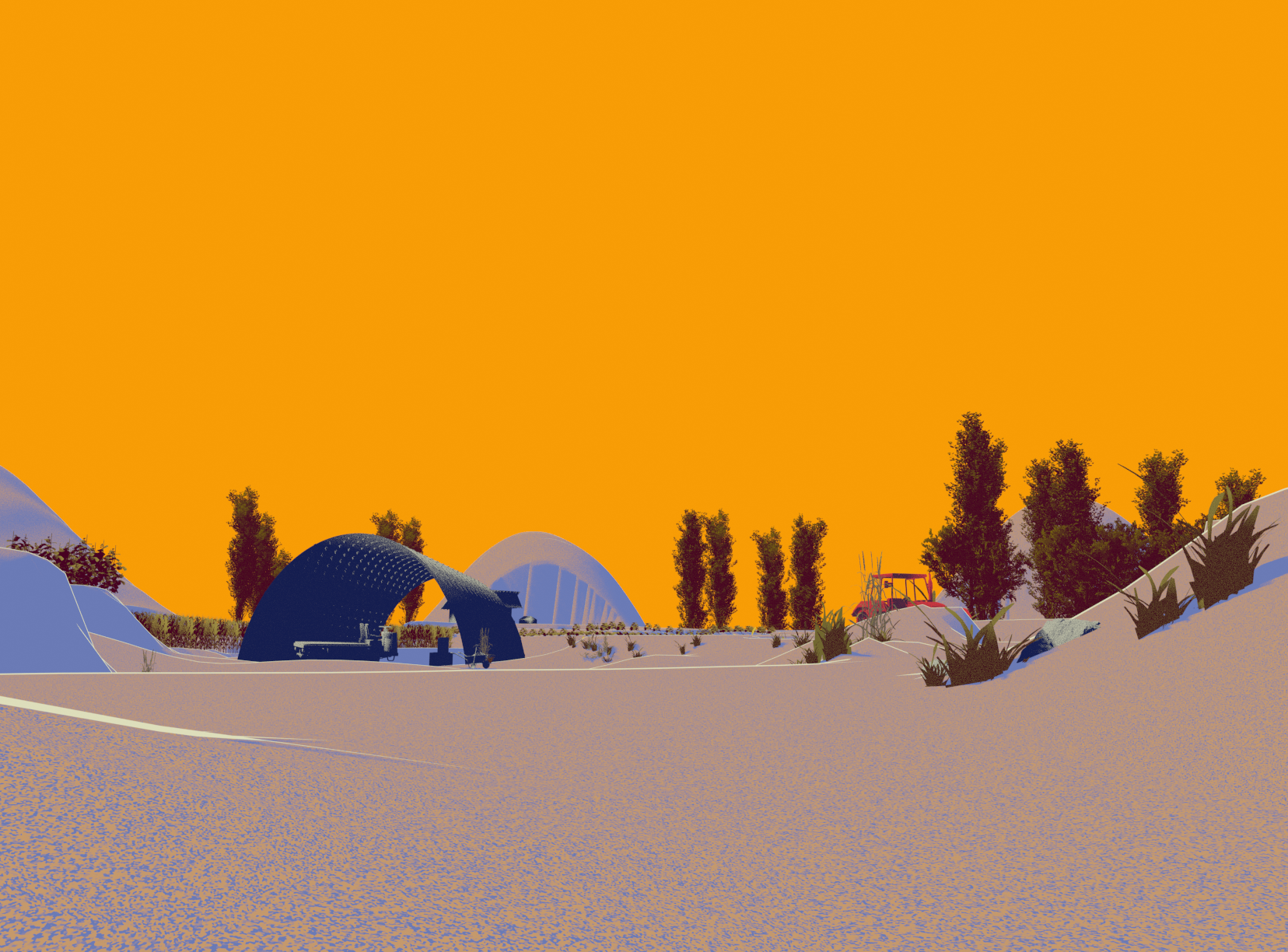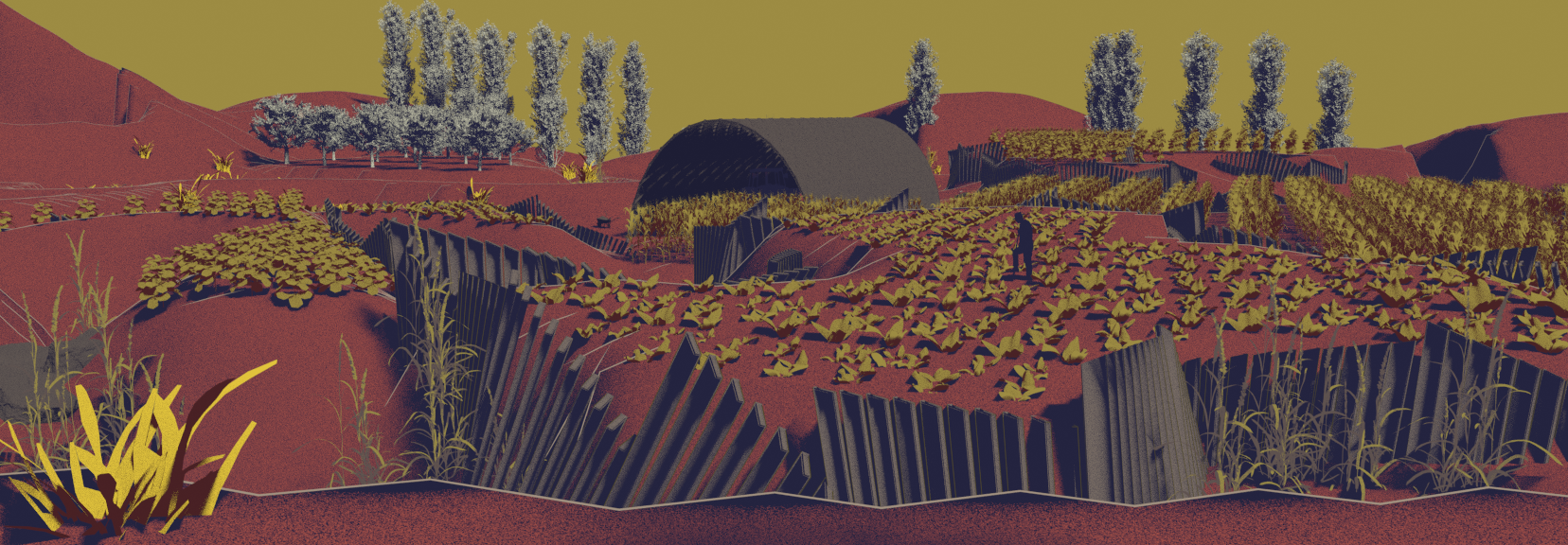promised landings
This project engages in a thought exercise wherein the future of landscape architecture becomes entangled with ethical environmental and socio-economic questions that surround designing landscapes related to climate migration and agricultural production. Moreover, it is situated within broader inquiries into how the discipline can benefit from grappling with counterfactual modes of practice.
In the United States, the phenomenon of climate refugees is not without precedent. Amidst the Dust Bowl crisis of the 1930s, the Resettlement Administration emerged to erect relief camps in western states, offering solace to farmers and their families seeking employment and refuge. This administration aspired to create a nationwide “greenbelt” of communal agricultural communities, but this vision proved excessively ambitious. The government-promoted communities, ostensibly utopian, manifested a reality that proved more dystopian.
Such historical failures highlight the potential for history to reverberate in the face of contemporary climate disasters. This speculation emphasizes a core conflict — the nefarious use of aesthetics and design operating as a propaganda device to exploit human migration towards landscapes of labor. By experimenting with various representational styles, the project delves into the historical role of aesthetics and advertising in motivating individuals to relocate and inhabit new territories.
Within this framework, two divergent “realities” unfold — one portraying an advertised utopia juxtaposed against another revealing the unvarnished truth. This dual narrative serves as a critical lens, peeling back the layers of deception inherent in the endeavors to mold public perception through the visual and aesthetic realm.











